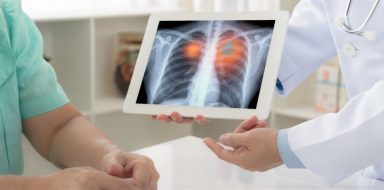The Best and Worst Foods for ADHD
Attention-deficit hyperactivity disorder (ADHD) is a condition that affects both children and adults. To help, there's DYANAVEL XR, a central nervous system stimulant prescription medicine used for the treatment of Attention Deficit Hyperactivity Disorder.
Worst Foods for ADHD
- Sugary snacks: Can increase hyperactivity and make it harder to focus.
- Processed meats: Contain preservatives that may affect behavior.
- High-caffeine drinks: Lead to restlessness and sleep disturbances.
- Artificial food colorings: May trigger hyperactivity in some people.
- Fast food: Often high in unhealthy fats that can impact brain function.
- Dairy products: Some with ADHD are sensitive to dairy, which can worsen symptoms.
- Iron-deficient foods: Low iron levels can contribute to poor focus and brain function.
- High-sodium foods: Too much salt can negatively affect brain health and behavior.
The best jobs for people with ADHD involve at least one of the following elements: creativity, interest, urgency and rewarding challenges.
Best Foods for ADHD
Protein
Protein is one of the most important nutrients for anybody with ADHD for two reasons.
Firstly, protein helps to keep your blood sugar stable meaning that you are less likely to get spikes and crashes. Blood sugar crashes cause grogginess and make it more difficult to concentrate, something which you will want to avoid!
Secondly, protein is necessary for your body to produce neurotransmitters such as serotonin, noradrenaline and dopamine. These chemicals play an important role in your mood and behavior, and keeping them in balance is crucial for anyone with ADHD.
Some foods which are high in protein include:
- Meat.
- Poultry.
- Fish.
- Eggs.
- Dairy products.
- Beans and pulses.
- Nuts.
As a general guideline, children should be eating around 24 grams of protein each day. Women should aim to eat 45 grams of protein daily, and men should aim to eat 55 grams.
It is especially important to eat some protein at breakfast time to ensure that you are set up well for the day. Try scrambled eggs or baked beans on wholegrain toast, or muesli with fruit and yogurt.
Nuts and jerky both make convenient, high-protein snacks to carry with you in case you feel hungry on the go.
Whole Grains
Like protein, whole grains provide you with a steady supply of energy and help to prevent sugar crashes. They also contain essential vitamins, minerals and fiber which is necessary for healthy digestion.
Some examples of whole grains include:
- Whole oats.
- Brown rice.
- Wholegrain barley.
- Buckwheat.
- Quinoa.
It is easy to incorporate more whole grains into your diet by switching white rice for brown, and white bread or pasta for wholemeal versions. You could also try adding barley to soups and stews or using buckwheat or quinoa as a base for salads.
Omega-3 Fatty Acids
Omega-3 fatty acids are a source of “good fats” which are necessary for healthy brain and nervous system function. There is plenty of research on omega-3 fatty acids for ADHD out there and the evidence seems very positive.
The best dietary sources of omega-3 fatty acids are oily, cold-water fish such as:
- Salmon.
- Mackerel.
- Sardines.
A word of caution though: Some scientists have suggested that eating fish containing high mercury levels could hurt ADHD symptoms. Therefore, it is best to avoid larger fish like tuna, swordfish or king mackerel.
Vitamin B6
Getting enough vitamin B6 is important as this micronutrient has a positive effect on the neurotransmitter dopamine. This could help to increase alertness and improve attentiveness in people with ADHD.
Foods which are high in vitamin B6 include:
- Pork.
- Poultry.
- Fish.
- Eggs.
- Whole grains.
- Fortified breakfast cereals.
- Soy products.
- Peanuts.
The recommended daily intake of vitamin B6 is between 0.7 milligrams and 1.5 milligrams for children (depending on age and sex), 1.2 milligrams for women and 1.4 milligrams for men.
Essential Minerals
Everybody needs enough vitamins and minerals in their diet, but this could be especially important if you have ADHD. Three of the most critical minerals for ADHD sufferers are zinc, iron and magnesium.
Zinc
Zinc influences the action of dopamine and may help to improve the way that the drug methylphenidate (Ritalin) works. It can be found in meat, shellfish, dairy products and cereals.
Children should consume between 5 milligrams and 9.5 milligrams of zinc every day, women should consume 7mg and men should aim for 9.5 milligrams.
Iron
Iron plays a role in the production of dopamine as well as being necessary for healthy red blood cells. Good sources of iron include meat, beans, nuts and leafy greens.
Children need between 6.9 milligrams and 14.8 milligrams of iron daily. Men of all ages and women over 50 need around 8.7 milligrams each day, but women of childbearing age require more at 14.8 milligrams daily.
Magnesium
Magnesium plays an important role in energy production and helps to regulate hormones and neurotransmitters. It can be found in meat, fish, nuts, leafy greens, dairy products and brown rice.
The recommended daily intake of magnesium is between 85 milligrams and 300 milligrams for children, 270 milligrams for women and 300 milligrams for men.
ADHD causes a variety of symptoms that can interfere with schoolwork, careers and relationships. This condition affects everyone differently, but some of the most common symptoms of ADHD may include:
- Finding it hard to concentrate on one task for a long period.
- Changing activities or tasks frequently.
- Difficulty organizing time and tasks.
- Fidgeting or difficulty sitting still.
- Impulsive or aggressive behavior.
ADHD is usually treated with medication, and some people with ADHD find therapies such as cognitive behavioral therapy (CBT) helpful. Many people also find that diet plays an important role in managing the symptoms of ADHD.
DYANAVEL XR
DYANAVEL XR is a prescription medicine used to treat attention deficit hyperactivity disorder (ADHD) in children aged 6 years and older, as well as adults. It contains the active ingredient amphetamine, which helps improve focus, attention, and self-control by affecting certain chemicals in the brain. DYANAVEL XR is available in a liquid form and is taken once a day, making it easy to use.
Some common side effects include loss of appetite, trouble sleeping and dry mouth. It's important to follow your doctor's instructions when using DYANAVEL XR to manage ADHD effectively.
Managing ADHD Symptoms With Diet
Changing your diet won’t cure your ADHD, but it could help you to manage your symptoms. Try to eat as natural a diet as possible and avoid foods that may aggravate your symptoms such as sugar and caffeine.
Eating plenty of protein, whole grains, fresh fruit, vegetables and other recommended foods for ADHD is the best way to ensure that you are getting all the nutrients you need. However, you could ask your physician to run tests if you feel that something is amiss.







